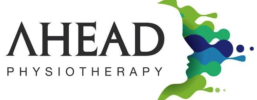What is TMJ?
The TMJ (temporo-mandibular joint) is the name given to the jaw joint. It is where the mandible, or
jaw bone, attaches to the skull. On each side of the head, the TMJ sits just anteriorly to the ear. The
“condyle” is the surface of the mandible that articulates with the “fossa” of the temporal bone of the
skull. For the TMJ to open, the condyle firstly rotates, then translates down and forwards allowing the
mouth to open. A disc sits in between the two surfaces, allowing for smoother functioning. This
movement can usually be felt by putting your fingers a few millimetres in front of your ear canal on
the side of your face, and then opening and closing your jaw.
What is TMD?
TMD (temporo-mandibular disorders) is a general term given to any dysfunction of the TMJ. This
can cover a range of conditions including disc displacement, arthritis, muscle spasm etc…
What are the most common signs and symptoms associated with TMD?
clicking
locking
lack of jaw movement
jaw pain
facial pain
headaches
neck pain
ear pain
tightness/tension in the jaw muscles
deviation/asymmetrical opening of the jaw
change of occlusion (resting position of teeth)
clenching teeth, grinding teeth, bruxism.
Can anything be done to help TMD? What treatment is available?
Yes! Physiotherapists are experts in musculoskeletal disorders, which means they treat joint and
muscle problems all day long. This means they are ideally trained to be assessing your jaw joint and
surrounding muscles to identify the cause of the TMD. Physiotherapy treatment can include manual
“hands-on” techniques, strengthening and mobilisation exercises, postural correction and relaxation
techniques, depending on what is identified as the primary problem. Working alongside other health
professionals, including doctors and dentists, is sometimes required for optimal management of TMD.
The highly trained team at Ahead Physiotherapy can tailor an appropriate management plan following
their accurate assessment and identification of the main problem/s.
